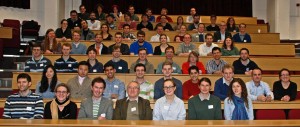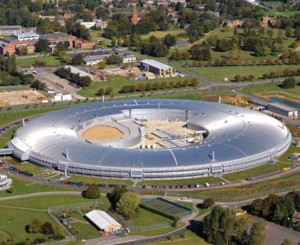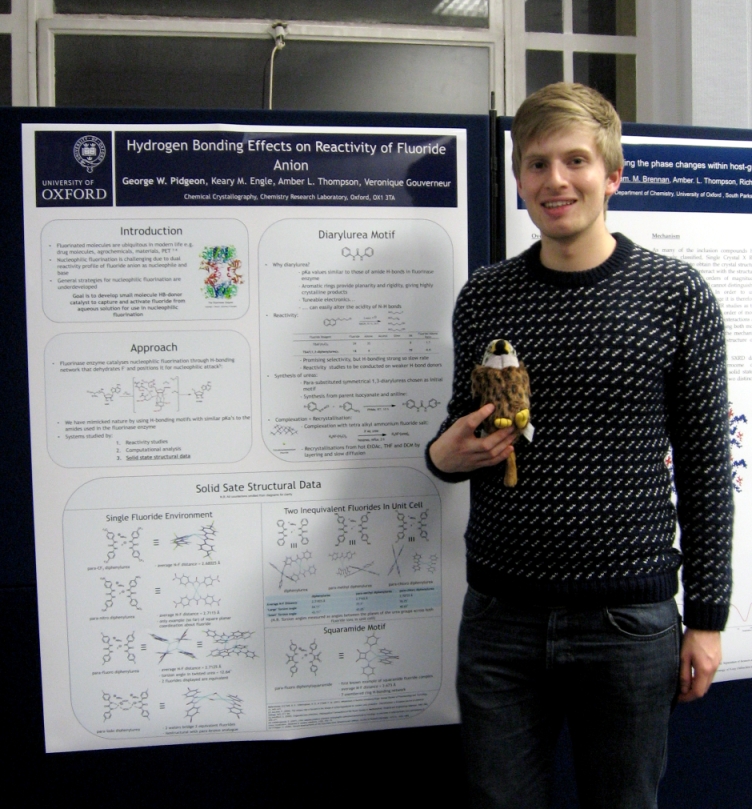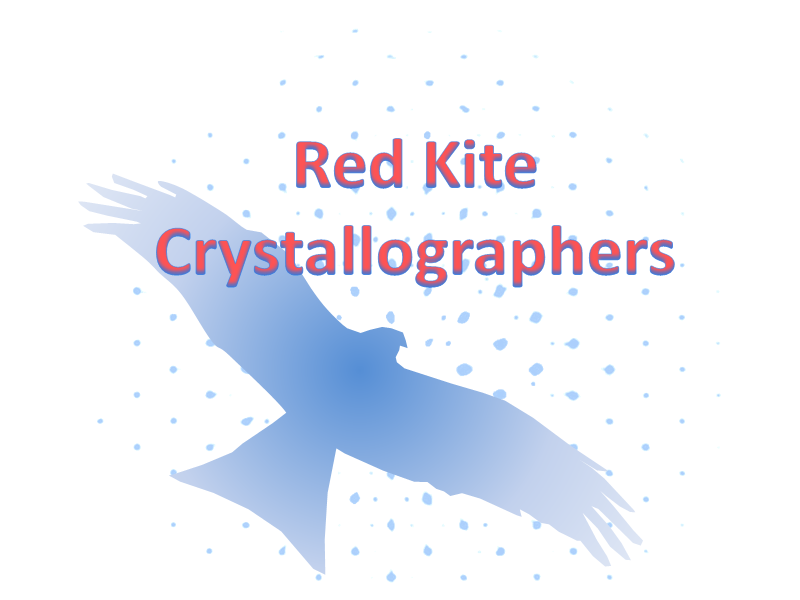 Once again, the weather contrived to cause problems, this time with flooding causing closures to both the Botley and the Abingdon Roads. Despite this, the speakers and organisers and, more importantly cake and lunch (!) all arrived in time even though some of the delegates were unable come (for those who missed it, the program for Red Kite V is available to download).
Once again, the weather contrived to cause problems, this time with flooding causing closures to both the Botley and the Abingdon Roads. Despite this, the speakers and organisers and, more importantly cake and lunch (!) all arrived in time even though some of the delegates were unable come (for those who missed it, the program for Red Kite V is available to download).
People who only had a short bus, cycle or walk arrived in good time for the first of the mini-plenary sessions which was presented by Prof. Andrew Weller from Oxford who discussed the preparation of an alkane complex by solid-state hydrogenation. The session was continued by Jerome Wicker (also Oxford) (who eventually managed to remember his title) and was talking about predicting whether or not materials will crystalise. This was followed by two more speakers from Oxford, Markus Gerstel talking about radiation damage in protein samples and Joshua Hill discussing framework materials.
After mid morning cake with coffee for those who were quickest and tea for those who weren’t (sorry about that – we will make sure there is more next time!), we started the second session. This began with our second mini-plenary speaker, Dr. Arwen Pearson from the Research Complex and the Astbury Centre, Leeds, who gave a nice presentation that demonstrated how reactions can be followed in the solid state in proteins. This was followed by three more speakers from Oxford: Andrew Jupp talking about novel organophosphorus species, Rémi Tirfoin explaining how important single crystal X-ray diffraction is to organometallic chemists and Andrew Johnston telling us about benzoylmethylecgonine – a simple compound whose structure is more complex that you would think.
Lunch was accompanied by posters and the room was a constant buzz as people mixed munching with science, before the final session began. The mini-plenary was presented by Prof. Mike Glazer (Oxford) who demonstrated how important it can be to get space groups right and what effect it can have on a phase diagram. This was followed Dr. Mark Warren (Diamond) explaining how the facilities on the small-molecule beamline I19 can help you follow a reaction. Next was Dr. Lynne Thomas from the Research Complex and Bath, who showed how you can use a range of techniques to understand the structure of materials as complex as Sitka Spruce (aka aircraft wood). The final speaker of the day was Dr. Tristan Youngs (ISIS) who explained how complex amorphous systems could be studied using neutrons. The meeting was brought to a close with the awarding of the obligatory tweeting poster prizes which were given to the nicely alliterating Joe, Jerome and Jamie (Paddison, Wicker and Lawler, respectively); congratulations to them.
The day finished with a drinks reception giving people who had missed the best posters a chance to talk to the winners. Once again, everyone seemed to enjoy the day. We are looking forward to seeing everyone again at the next meeting which will be held on the Harwell site over the summer.
Finally, the organisers would like to thank all the excellent speakers, delightful attendees, esteemed poster judges, kind souls who helped set up the rooms, and especially the John Fell Fund who provided sustenance:Â together you made this another fantastic meeting.



